LG Q6 Review

Introduction
Call it the mini G6: the new mid-range LG Q6 looks and feels a lot like the company’s flagship phone. It has a similar bezel-less, immersive display and it’s got a nearly identical interface.
Of course, when you are talking about a mid-range phone like this new Q6 — sold at half the price of the LG G6 — you know some compromises have been made. Rather than having high-performance silicon under the hood, the Q6 is powered by the entry-level Snapdragon 435 system chip and it lacks the fancy dual camera system of the G6. It’s not water-protected either.
Also, it does not have a fingerprint scanner! Instead, it supports face recognition, but can it really replace the speed, convenience and accuracy of a fingerprint reader?
We look at this and all other interesting details around the new LG Q6 right below.
Design
A compact phone with a plastic back that scratches extremely easily.
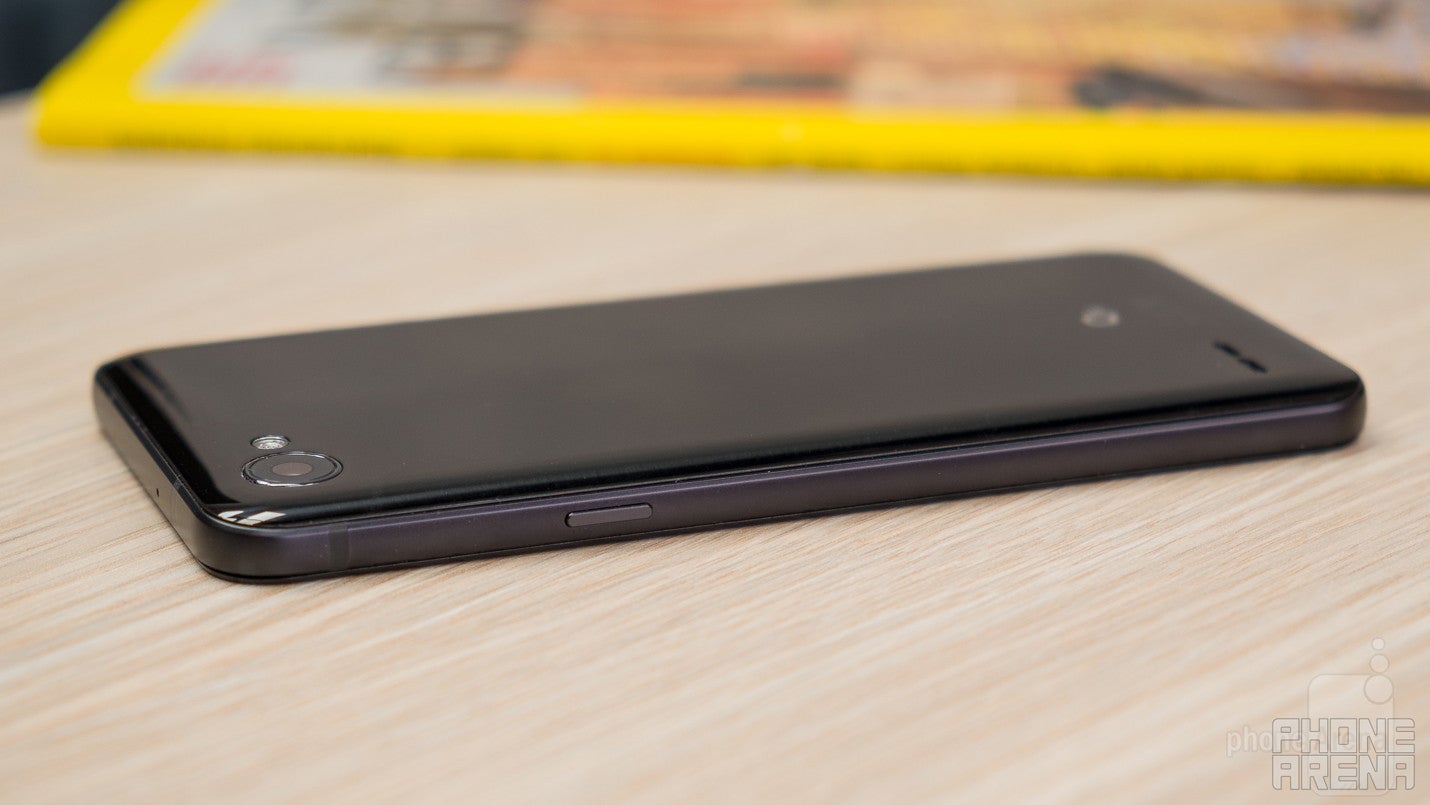
The LG Q6 looks a lot like the flagship G6, but it is not made of the same premium materials. Reassuringly, the frame is made of durable, series 7000 aluminum that definitely gives the phone a more solid feeling. The Q6 is MIL-STD-810G certified and LG emphasizes that its aluminum frame and some bezel is there to protect it from easily shattering and from damage on impact. Reassuringly, the Q6 has passed 12 MIL-STD-810G tests, including a transit drop test. However, the back is made of plastic and in real life it scratches extremely easily: on day 2 of our journey with the phone, the back was already badly scratched, and we never dropped it or did anything extreme to it.
What we really like about the Q6 is just how compact it feels for a phone with a 5.5-inch screen: it is just barely bigger than the 4.7-inch iPhone 7 in terms of physical dimensions! This new compact design might be all the rage with flagships, but when it comes to affordable phones, the Q6 is the only one to have such a feature.
The phone is available in a choice of four colors: Terra Gold, Ice Platinum, Mystic White, and Astro Black, and we have the black one up for review.
Face Recognition
It’s completely useless in real life.
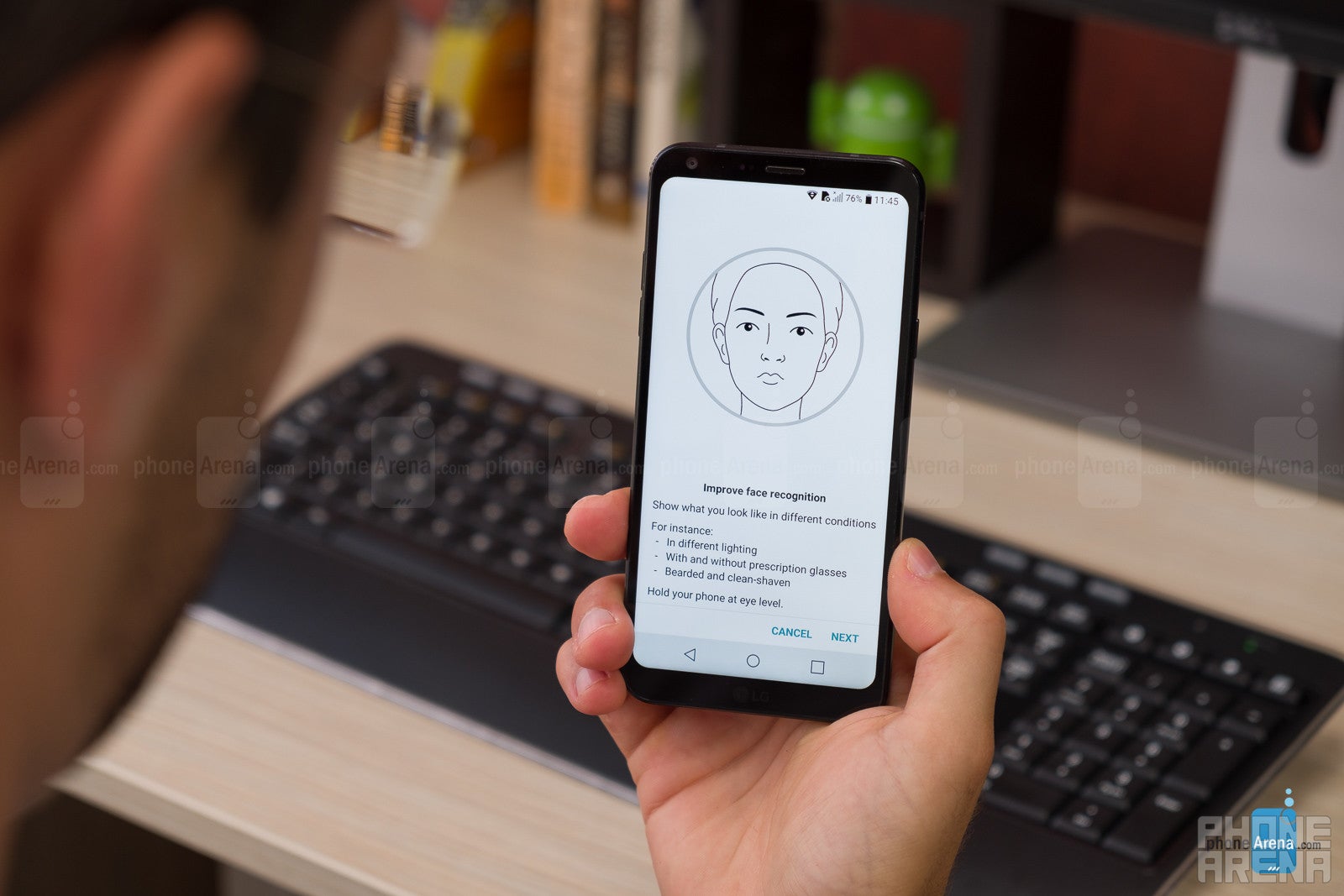
It feels weird not having a fingerprint scanner on your phone in 2017, yet this is exactly the case with the LG Q6. It does not just leave you typing PIN codes the old-fashioned way, though: there is face recognition built in.
I was eager to test how this worked in real life: you don’t need to wake up the screen in order for face scanning to work on the Q6, the idea is that you can just pull out your phone from your pocket, look at it, and it unlocks. In theory.
Does it work in real life? Nope. In fact, it’s completely useless. My success rate with face unlock on the Q6 has been low to the point of frustration. The thing is that you need to hold the phone at the right angle and distance from your face for this feature to actually work, and you need enough light – face unlock simply does not work in the dark, or even at dusk. And even when conditions are optimal for it to do its thing, it can be slower than scanning a fingerprint, sometimes requiring seconds to detect that it's you.
With so many limitations, at the end of the day most people will sorely miss having a good old fingerprint scanner.
Display
5.5” 1080p LCD display with that bezel-less look on a mid-ranger! However, it is slightly oversharpened and colors are a bit dull.
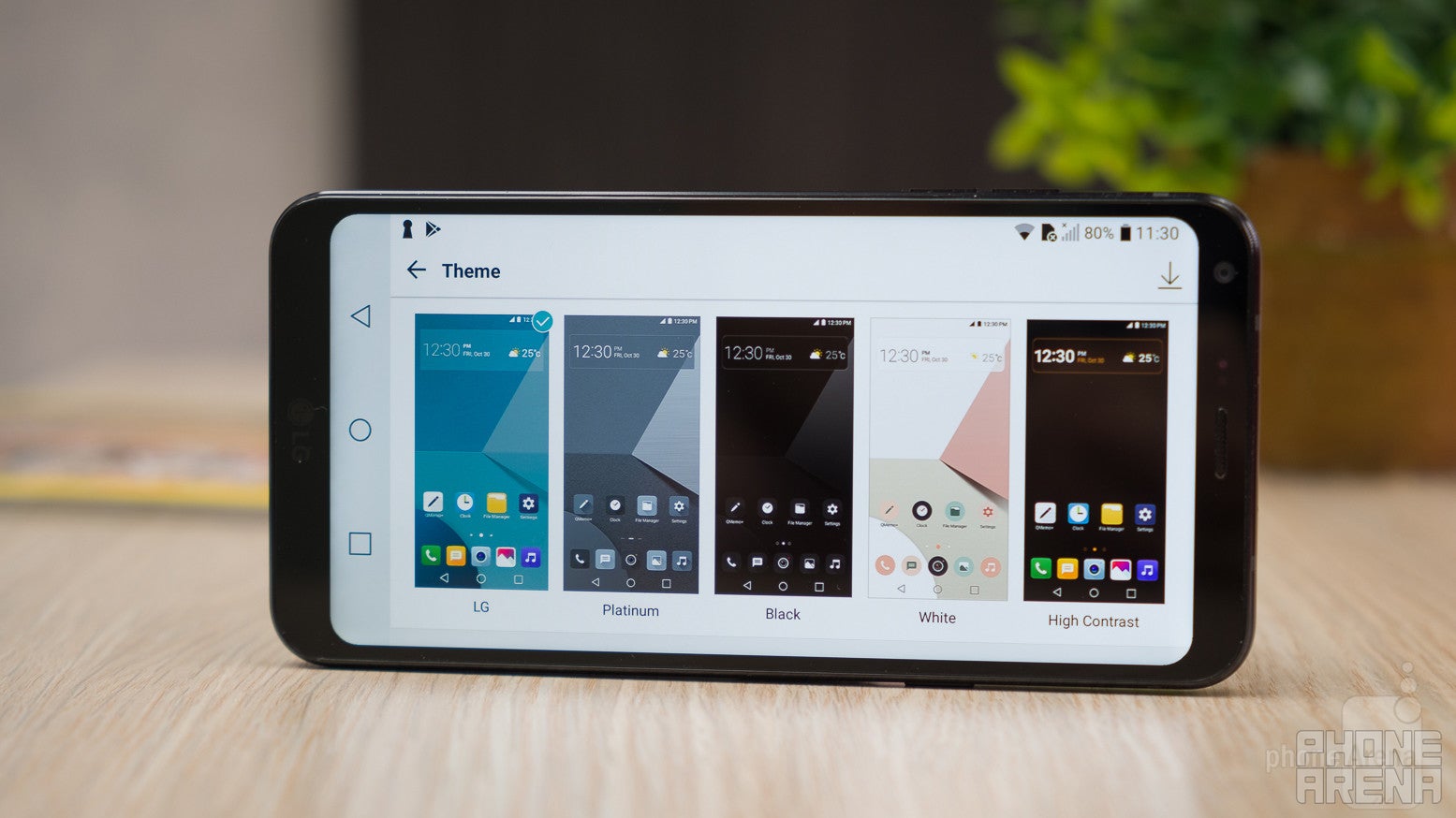
The LG Q6 features a 5.5-inch 18:9 LCD display with a 1080p resolution (1080 x 2160 pixels because it’s taller).
LG calls this a Full Vision display because of the minimal bezel around the sides and it is without a doubt the most impressive feature of the Q6. It feels immersive, futuristic, great. It’s a completely flat panel, there is no curve to it like on Samsung phone, and just like on the LG G6, the corners are very slightly rounded.
But there are a few ‘buts’: first and foremost, the screen is oversharpened in an artificial and very noticeable way. Back in the day, we had a similar issue with the LG G3, the effect looks similar. And then, color reproduction is far from perfect on the Q6. It has less lively colors than more expensive phones, and it is slightly bluish in terms of color balance.
The display also reaches maximum brightness level of 457 nits… which is about average. We tested the phone in real life, and it was a bit too reflective and not sufficiently bright for perfectly comfortable outdoor use.
We should also note that the display is protected by Gorilla Glass 3, so it is not as durable as other modern phones.
Interface and Functionality
Colorful and playful visual style and no app drawer by default.
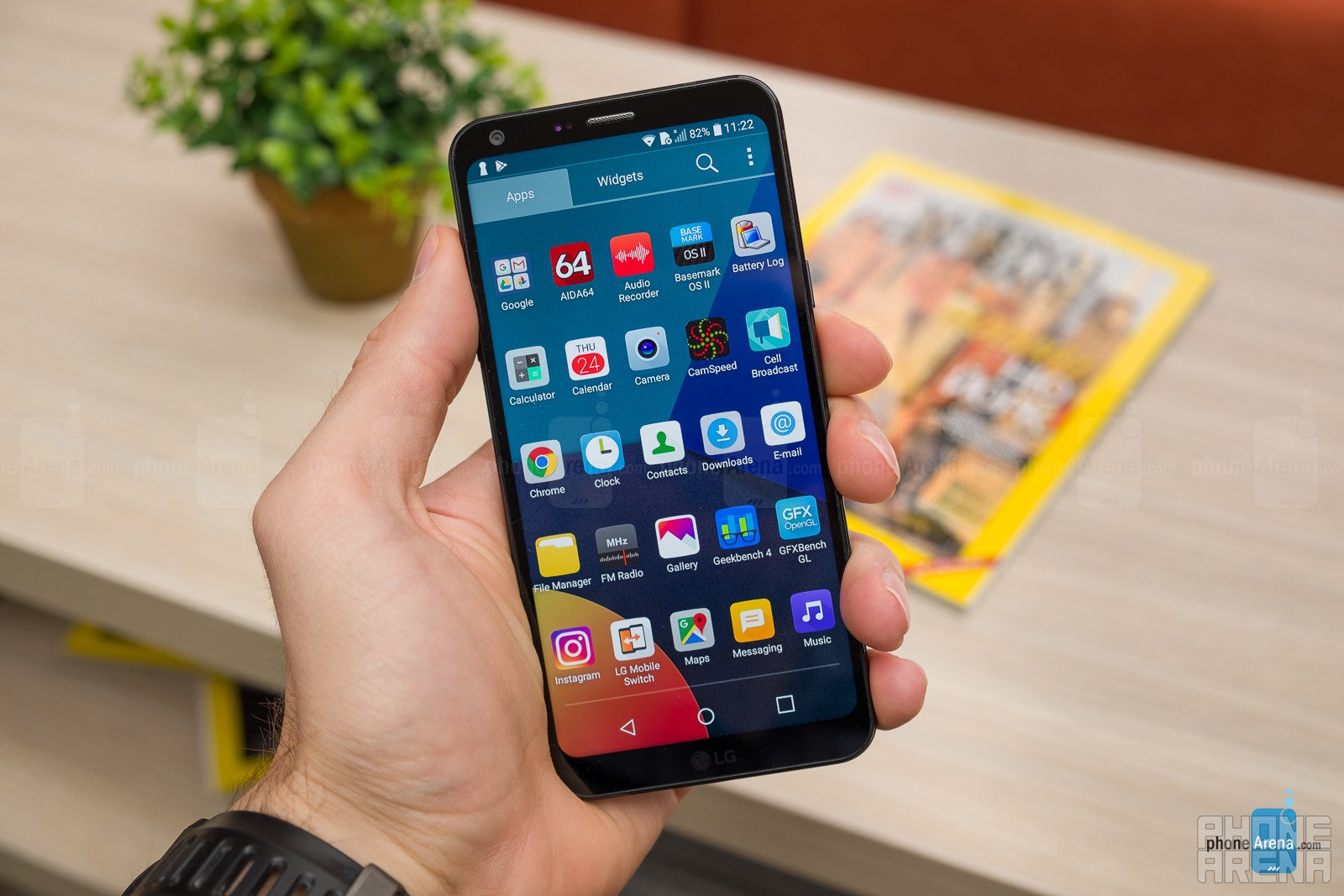
The LG Q6 takes a page from the LG G6 book when it comes to interface: it runs on Android 7.1.1 Nougat with an identical UI.
What this means is that you get the same visual styling as on other LG phones, with the same rectangular icons with rounded corners and colorful, playful visual aesthetics that look almost as if they were taken from a comic book. This is a look that LG has been sticking with in the past few years, and it looks far less modern when compared to cleaner, more refined interfaces by Samsung or even stock Android.
Another interesting detail is that LG has decided to go with no app drawer, so the interface looks a bit more like iOS. If you miss having an app drawer, though, you can enable it in settings.
You can also use split-screen multitasking on the Q6 and the taller screen makes it a bit more convenient, but we still rarely do. For some rare cases, though, it can be useful: playing a YouTube video while doing something else is a prime example.
The signature LG Capture+ feature for annotated screenshot is also on board on the Q6: tap on it in the notification drawer and you can draw on top of a screenshot. LG’s QuickMemo+ also allows you to draw and jot down notes easily, as well as do freeform cropping on your notes, and you can share all of that with buddies easily. You also have typical LG features like double tap to lock and unlock the phone, and they work as you’d expect.
The Q6 also has an FM radio, so you can plug in speakers or headphones and listen to good old fashioned radio, if you like.
In the notification dropdown or in settings, you’d also find LG’s Comfort View. This is a blue light filter that you can enable after sunset to ensure a good night sleep, and you can also select one of three levels of light filtering: a low, a medium and a strong one.
Another thing that has to be pointed out is that typing on the LG Q6 feels slower and less accurate than on other phones. LG’s stock keyboard has always felt a bit clunky, and while it’s hard to pin-point exactly why, fact is that on the Q6 we found to mistype way more often than usually.
Processor, Performance and Memory
The Snapdragon 435 is certainly the Q6’s weakest spot.
At the beginning of this review, we said that with affordable phones like the Q6 compromises have to be made, and the entry-level Qualcomm Snapdragon 435 system chip feels like one of the biggest compromises in this phone.
The Snapdragon 435 is just not enough to provide a sufficiently smooth and pleasing experience: it’s fine for daily tasks, but it stutters in many places. In daily life, it is apps like Facebook and the browser that are affected: scrolling the news feed is often stuttery and switching between apps also. We imagine things will get worse, not better with time.
The Q6 is also not a phone for gamers. You can play some casual games on it without an issue, but if you run more graphically intense games, you will see frames dropped and the phone heating up significantly. In fact, we noticed it felt pretty hot even in daily use, and that’s something to keep in mind, as well. We played Riptide GP2 on the Q6 and it was playable, but definitely not as fluid as a dedicated gamer would like.
In terms of storage, the phone ships with 32GB of native memory, and it supports microSD cards.
Internet and Connectivity
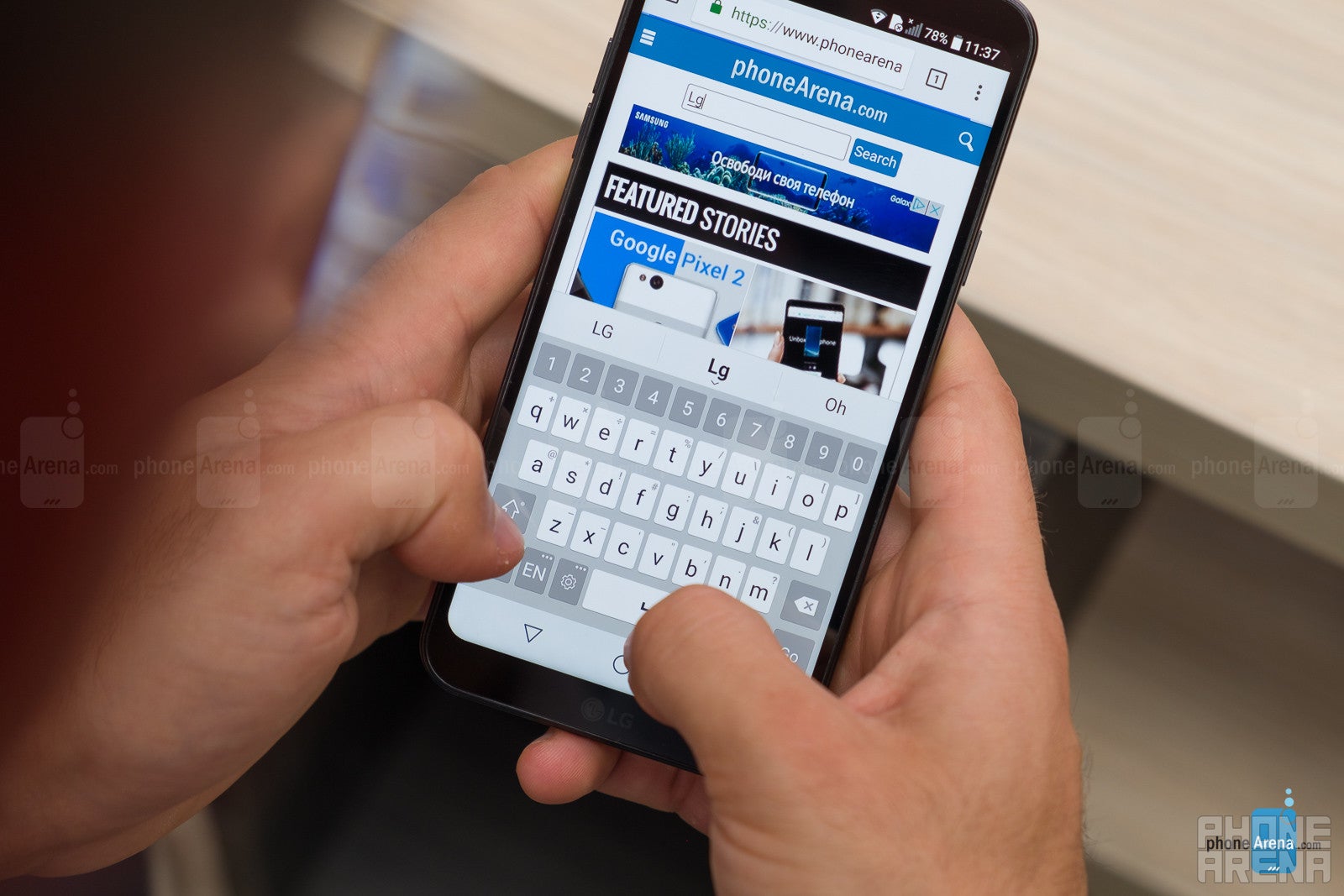
The LG Q6 ships with Google’s Chrome as the default and only browser on board. By now, Google Chrome is the go-to browser for most people: it’s speedy, syncs effortlessly across devices and is comfortable to use. And it loads pages pretty quickly on the Q6, but browsing through them can be a bit stuttery, especially for those pages with lots of images.
The LG Q6 is a phone intended to sell in Europe, the Middle East and Asia (India, in particular). As such, it supports 4G bands that ensure a proper LTE connection in those markets. Here is the full list of LTE bands the LG Q6 supports:
- FDD LTE: Band 1, 3, 4, 5, 7, 8, 12, 17, 20, 28
- TDD LTE: Band 38
Camera
Images turn out good in good lighting, but there are no dual camera tricks, nor 4K video recording capabilities.

The LG Q6 comes with a 13-megapixel f/2.2 camera on the back and a 5-megapixel shooter up front.
Here is a tip: double click the volume down key to quickly start the camera.
The camera app on the LG Q6 is a standard LG affair. You have your controls on the side with a selection of 9 different filters and with only three camera modes: auto, panorama, and food. HDR defaults to auto, and you can change this in the camera settings. You can also long hold the camera shutter key and slide it left and right to zoom in and out. You also swipe up and down on the viewfinder to switch between the front and rear cameras.
Image Quality
What about how images actually turn out?
The LG Q6 delivers a fairly good image quality in good light. There is no excessive oversharpening, yet images appear crisp; colors are also nicely balanced and look lively, and the exposure is also properly balanced. Detail is not as plentiful as one would wish for, though.
The built-in single LED flash is not too strong, but it keeps colors mostly in check. It is the sore lack of detail with night-time pictures that is a bigger issue.
When it comes to the front camera… it is not that great. There are two big issues with it: dynamic range, as everything around your face usually looks way oversharpened and terribly burned, and secondly, detail, as there is not a lot of it in the pictures.
Video quality
The LG Q6 can only record video at up 1080p Full HD, while some of its rivals these days are capable of 4K video capture, so that’s one downside. You have the option to add digital stabilization to videos in settings (it is not enabled by default). Videos turn out about average: there is nothing really impressive here: the level of resolved detail is on the low side, stabilization is fine, but not great, and the focusing is fast, but not lightning fast as on other phones.


Sound quality
You have a single loudspeaker on the LG Q6 and it’s located on the back of the phone. You can easily muffle it if you place the phone with its back lying flat, though there's a tiny raised dot on the speaker grille preventing this. But still, the speaker is on the quiet side, even when you increase the volume level to the maximum, and sound quality is about average for a phone. That is to say that you don’t get much depth and it all sounds a bit tinny.
There is also an audio jack and it’s on the bottom. That’s a nice touch for those who still rely on their good old headphones or use their phone to power their car or home stereo system.
Call Quality
Call quality on the LG Q6 is about average. While we had no major issues: voices in the earpiece do sound a bit on the quiet side, and our voice comes out slightly distorted on the other side.
Battery life
The LG Q6 battery life is enough to last you a full day, but not much more.
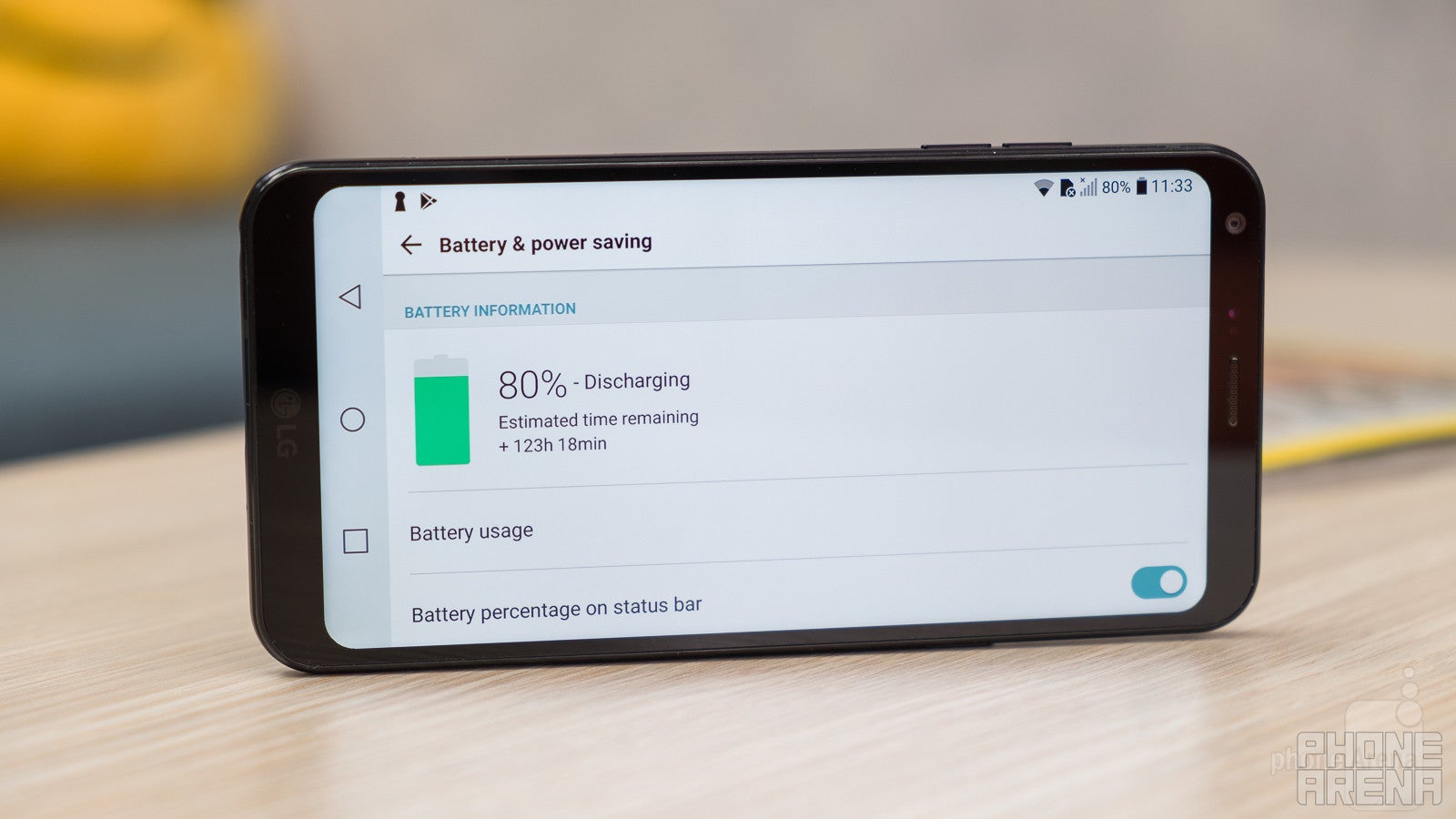
The LG Q6 features a 3,000mAh, non-removable battery.
In our real world use of the device, we found that it is a solid one-day performer that will get you through even those longer days, but not much more than that.
On our custom test, the LG Q6 scored an above average 8 hours and 26 minutes, outscoring the LG G6 significantly. That is not a tall order as the G6 barely lasts a full day, though. You can check out how the Q6 compares to other phones right below. Keep in mind that before testing battery life we set all phones to a brightness level of 200 nits, comfortable for indoor use, to level the playing field.
Price and alternatives
The LG Q6 is priced at up to €350 in Europe, but interestingly enough it costs only €200 in India! Further complicating the picture is the price in the United Kingdom (£250) and Australia (A$400), which is somewhere in-between. It’s the first time we see such a huge discrepancy in the price of the same phone in different markets.
This, of course, makes it hard to judge the LG Q6: it’s a great value in India, and a mid-ranger with many more capable competitors in Europe. Since we are based closer to the European market, we will take the higher base price as reference. Here are the closest rivals to the LG Q6 based on that:
Huawei Nova 2: the phone retails for €400 euro, and looks slightly more premium in terms of build quality, plus it features a more promising dual camera system
Honor 9: the successor to the popular Honor 8 comes at a price of €390 and features a sleek, flagship-grade design, a very powerful processor and a capable dual camera system.
Samsung Galaxy A5 (2017) is a water-proof affordable phone that can be found for less than the LG Q6 and offers a more alluring design and an enviable battery life
Apple iPhone SE can now be had for just €320 and it offers a vastly more powerful system chip, better camera with 4K video and the power of iOS with all the great apps that come with it.
Conclusion
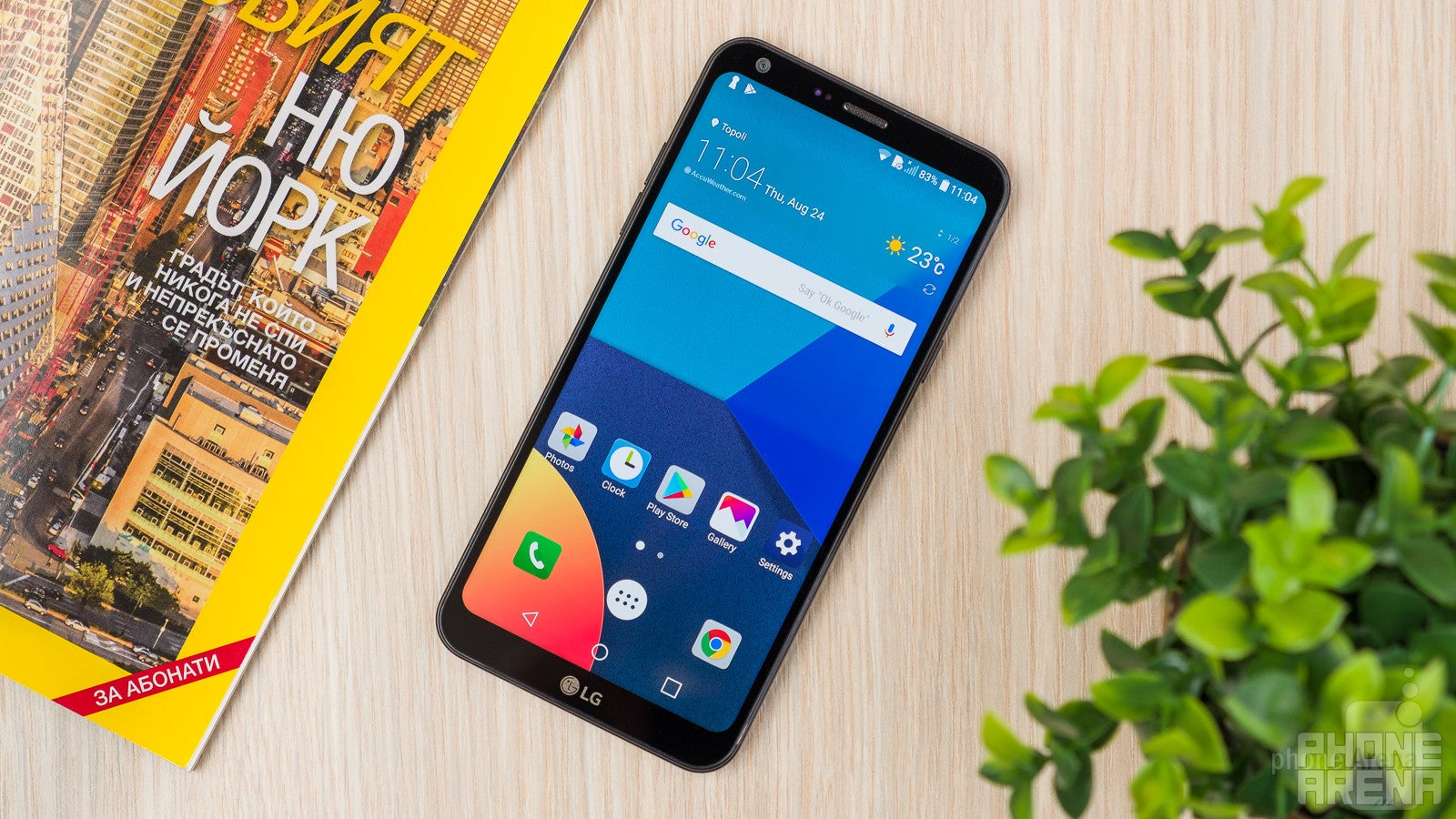
At the end of the day, the LG Q6 is a unique phone: it’s the only affordable phone with a bezel-less screen. That is a game-changer and it’s an important feature, but it’s not the only feature that matters.
The LG Q6 feels a bit underpowered, its plastic back scratches extremely easily, its display is oversharpened and it’s noticeable, and its camera is nothing more than average and does not record 4K video.
Worst of all, the lack of a fingerprint scanner and the poorly performing face recognition are very annoying for a modern, 2017 phone.
At its price of €200 in India and at the lower prices in the UK and Australia, we can easily overlook the phone’s flaws (well, it’s hard to forgive the lack of a fingerprint scanner…) and blame it all on the cost, but at the €350 full retail price in Europe, there are far better options out there.

Follow us on Google News
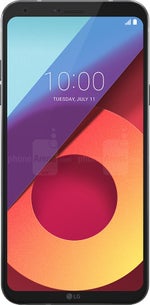
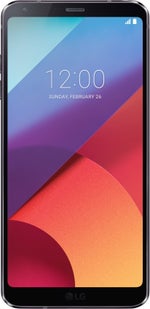
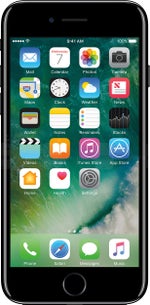
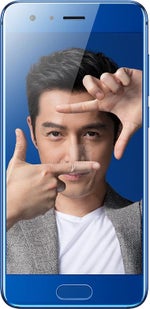

















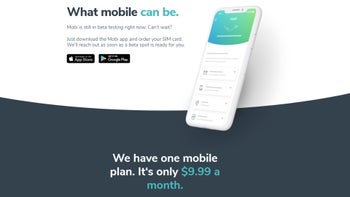
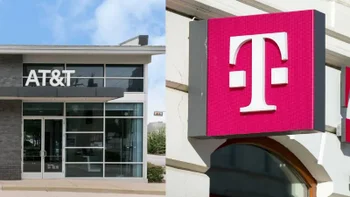

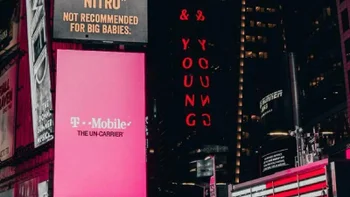
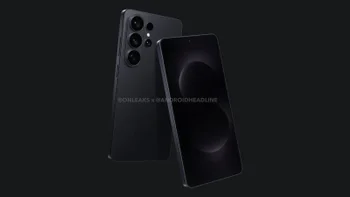


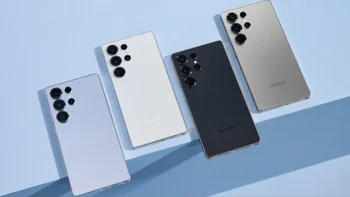
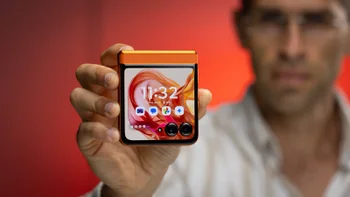
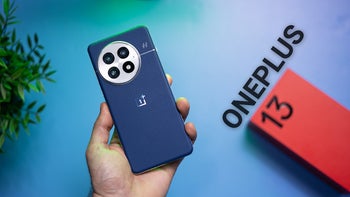
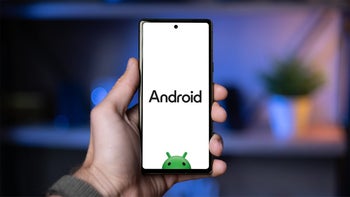
Things that are NOT allowed:
To help keep our community safe and free from spam, we apply temporary limits to newly created accounts: